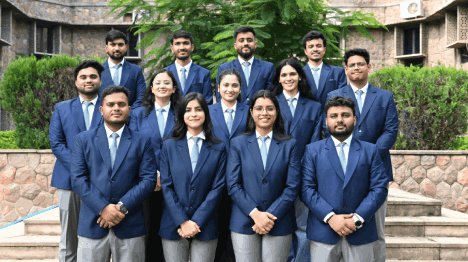- About Us
- Academics
Schools
Programs
General Information
- Faculty
The faculty members and researchers working at IIHMR University come from varied backgrounds including, but not limited to medicine, public health, management, economics, statistics, demography, human geography, social and behavioral sciences, rural development and pharmaceuticals.
- Admissions
- Research
.Publications & Journal
- Executive Education
Executive Programmes
- Online Certification Courses
ONLINE CERTIFICATION Courses
- Training
- Placements
- Fee Payment
- NAAC
- IQAC
- NIRF
- Webinars
- About Us
- About IIHMR University
- Board of Management
- Academic Council
- Board of Studies
- Research Board
- Institutional Review Board
- Finance & Audit Committee
- Departmental Research Committee
- Chairperson's Message
- President's Message
- IIHMR University Act
- Infrastructure
- Collaboration
- Ranking
- Board of Studies (School of Digital Health)
- Awards & Accolades
- Academics
- Institute of Health Management Research
- School of Pharmaceutical Management
- School of Development Studies
- School of Digital Health
- SD Gupta School of Public Health
- MBA (Hospital and Health Management)
- MBA (Pharmaceutical Management)
- MBA (Development Management)
- MBA (Healthcare Analytics)
- Master of Public Health
- Student Manual – Cohort 9 (2021-2023)
- Master of Public Health Offered by Johns Hopkins Bloomberg School of Public Health, USA in cooperation with IIHMR University, Jaipur, India
- Ph. D.
- MBA CSR & ESG Management (Executive)
- MBA Sustainable Business Management (Executive)
- Common Information for all the Programs
- Academic Calendar
- Student Handbook 2020-21
- Committees
- Policies
- Annual Exam Calendar
- Library
- Faculty
- Officers of University
- Dean of Institute of Health Management Research
- Dean of School of Pharmaceutical Management
- Dean of School of Development Studies
- Dean of SD Gupta School of Public Health
- Dean of School of Digital Health
- School of Digital Health
- Faculty List A to Z
- Faculty List Designation Wise
- Faculty List School Wise
- Admissions
- Research
- Executive Education
- Training
- Placements
- Alumni
- Events
- Job Openings
- Contact
- Research
Food Fortification in the State of Rajasthan
Agency : GAIN, New Delhi
Nutrition is integral to the first Millennium Development Goal (MDG) on hunger and poverty. Moreover, it is also instrumental in the efforts to achieve other MDGs, particularly those related to improvements in primary education enrollment and attainment, gender equity, child mortality, maternal health, and the ability to combat disease. The problem of malnutrition continues unabated despite significant achievements made in various spheres, particularly agricultural production, food sufficiency and industrial growth. Besides, there have been several programs to provide nutritional support to children and vulnerable population. It is believed that the poverty reduction and strengthening of health care systems alone cannot solve micronutrient deficiency problems
Food fortification is a demonstrated and cost-effective way to ensure that large number of those at risk of vitamin and mineral deficiencies receive the nutrients they need. GAIN, which has already been funding 16 programs in 14 countries, is keen to have its first major project in India launched in Rajasthan. It intends to implement Integrated Food Fortification Project for tackling micronutrient malnutrition. It will work with tri-sector partnership involving public, private and civil society sectors to joindy address the issue of malnutrition. Under this backdrop, IIHMR carried out this scoping study to provide important inputs for designing and implementing the interventions for food fortification in the state of Rajasthan.
The study covered major programs providing nutritional support, like Mid Day Meal Scheme (MDMS), Integrated Child Development Scheme (ICDS) and Public Distribution System (PDS). It also covered industries which could be channelized for food fortification interventions, including oil producers and their association, flour mills and their association and milk federation (SARAS dairy). The methodology included analysis of secondary data, discussions with officials at different levels, and a rapid community survey to understand consumption pattern.



